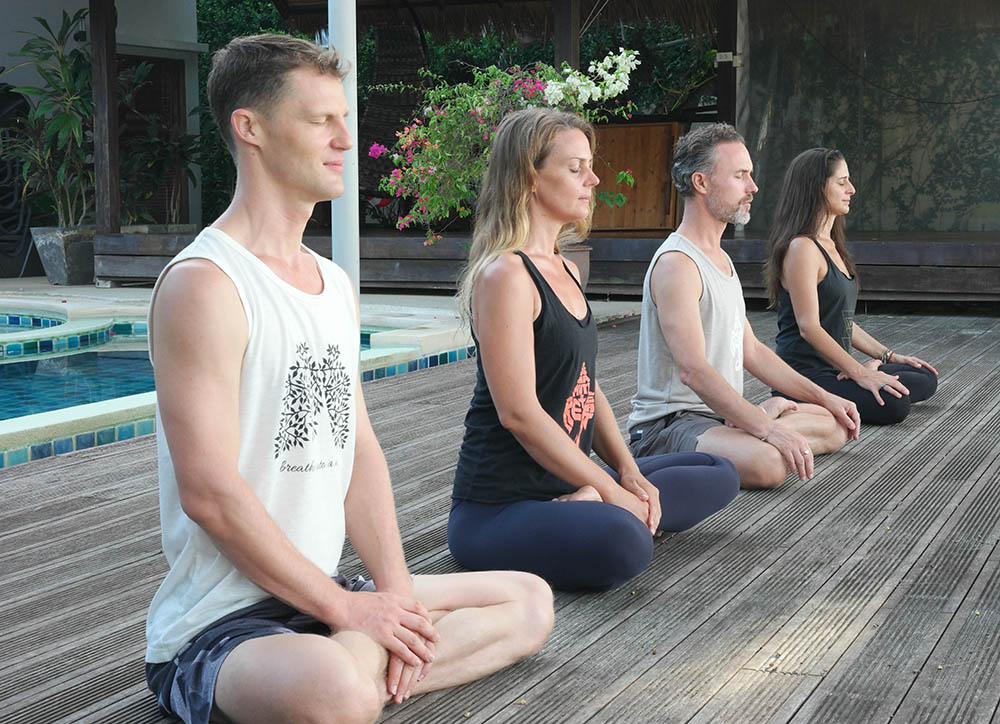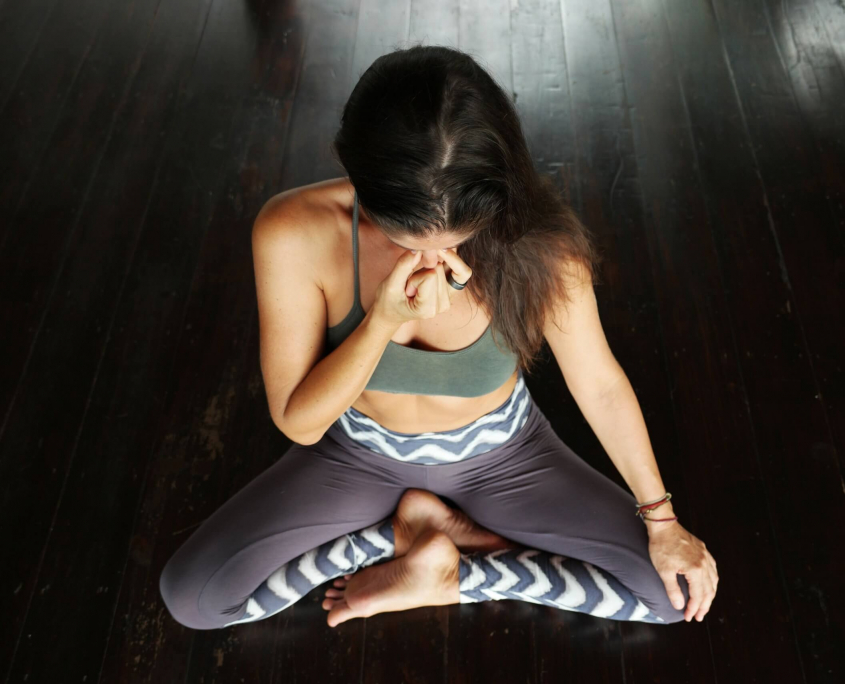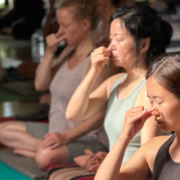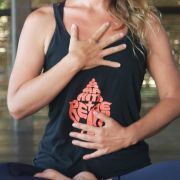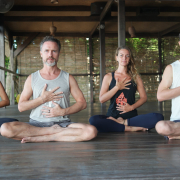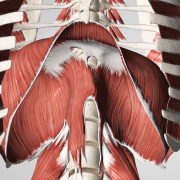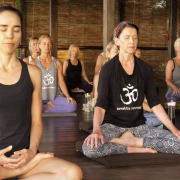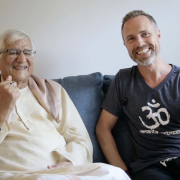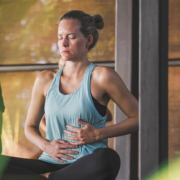 https://samahitaretreat.com/wp-content/uploads/2024/02/basic-breathwork.webp
600
798
Dr. Paul Dallaghan
http://samahitaretreat.com/wp-content/uploads/2024/01/samahita-logo-v2.svg
Dr. Paul Dallaghan2024-02-28 20:34:422024-02-28 20:35:53Navigate the World of Breathing
https://samahitaretreat.com/wp-content/uploads/2024/02/basic-breathwork.webp
600
798
Dr. Paul Dallaghan
http://samahitaretreat.com/wp-content/uploads/2024/01/samahita-logo-v2.svg
Dr. Paul Dallaghan2024-02-28 20:34:422024-02-28 20:35:53Navigate the World of BreathingProper Breathing is Breathing Through Your Nose
Boost your health dramatically by ensuring you are breathing through your nose – at all times – whether directly doing breathing exercises, a yoga-asana practice, household or work duties throughout the day, or while sleeping. The benefits of nasal breathing compared to mouth breathing have been well researched, and are worth understanding so you can optimize your breathing habits and ensure they are functioning well.
The Anatomy of Nasal Breathing
For humans, nasal breathing is a product of, and a contributor to, our evolved neck and facial structure most clearly revealed in our ability to speak, a distinguishing feature that differs from other primates in clear anatomical ways. In contrast to our closest related non-human primate species:
- The human airway is elongated with a poorly supported oropharynx (area of the throat that includes the soft palate, side and back wall of the throat, tonsils, and back of the tongue.)
- Our foramen magnum (oval-shaped opening in the occipital bone) is more anteriorly positioned
- Our maxillo-mandibular complex (jaw area) is regressed to allow for adequate speech
- We have smaller mouths with an average of 32 teeth as opposed to up to 44 in a chimpanzee
- and, in response to these skeletal changes, we have a retreated tongue giving it an obstructive presence in the upper airway
“The nose acts as a regulator performing certain anatomical functions such as air filtration, temperature control, and humidity adjustment of the air when we inhale. Lined with millions of tiny cilia and mucous membranes, the nose is also designed to catch bacteria, dirt and debris that would otherwise travel into our lungs”
Why Nasal Breathing is Essential for Health:
Both normal and healthy breathing, and specific breathing exercises require nasal breathing. Our structure is highly sophisticated and evolved for this purpose and for some very good reasons.
- Proper Craniofacial Airway Development
At the start of life nasal breathing allows for proper development of a child’s facial structure. Whereas studies reveal poor orofacial development due to predominant mouth breathing, especially in the first two years of life (1).
- Air, Temperature and Humidity Control
The nose acts as a regulator performing certain anatomical functions such as air filtration, temperature control, and humidity adjustment of the air when we inhale. Lined with millions of tiny cilia and mucous membranes, the nose is also designed to catch bacteria, dirt and debris that would otherwise travel into our lungs.
- Prevents Inflammation in Nasal Mucosa
Chronic mouth breathing has been shown to under-ventilate the nose which may lead to an increase in inflammation in the nasal mucosa, an unwelcome feature at any time and especially during a potential COVID-19 infection. An effective way to ensure proper ventilation is the practice of Neti described in this video and blog: How to do Neti: The Ancient Nasal Irrigation from Hatha Yoga.
- Mouth Breathing Linked to Sleep Apnea and Poor Quality Sleep
Mouth breathing also leads to sleep-disordered breathing. If one breathes through the mouth in waking hours then it is unlikely regulated nasal breathing occurs when asleep. This may lead to issues with obstructive sleep apnea, poorer quality sleep, and thus lower stress resilience (2).
- Improves Overall Lung Function
A nasal breath also allows the diaphragm to descend more deeply and thereby increase lung function and ventilation. While breathing through the mouth is inherently shallow and has more of an aggressive effect on the nervous system.
- Sinus Stimulation
Each nasal breath circulates air in the different sinuses, sites of nitric oxide production as well as stimulation of these hollow cavities in the skull. The paranasal sinuses, the sphenoid and ethmoid, are anatomically closest to the hypohysial cavity where the pituitary sits, giving a massage effect to this gland, an event that is bypassed when mouth breathing.
- Invokes Calmer States
The opportunity to regulate and elongate the breath occurs through the nose resulting in a calmer state and even a potential whole brain stimulation that possibly modulates behavior and the state of consciousness (3). Mouth breathing will leave you feeling heavier, less clear, more sluggish.
- Supports Brain Function
Recent research on humans revealed that nasal breathing entrained local field potential activity in the piriform cortex, hippocampus, and amygdala which diminished when respiration was diverted to the mouth (4).
In summary, nasal breathing plays a pivotal role in various physiological functions, with its benefits being completely lost and other issues arising in mouth breathing. It is, therefore, highly recommended to invest consistent time and effort to train towards nasal breathing if this is not already your natural way to breathe.
Link to Main Article: The Power in Yoga’s Approach to Upgraded Breathing
Dr. Paul Dallaghan’s expertise with breathwork, body and meditative practices comes from three sources: (1) three decades of daily dedicated practice and teaching these techniques; (2) uniquely acknowledged in the Yoga tradition by the title of “Master Yogi-Prānācharya (expert in breath)”, following an immersion in the original culture through one-on-one direct training in practice and study of ancient texts; (3) a PhD in doctoral scientific research at a leading US university (Emory) covering both the tradition and science of yoga and breath practices in terms of stress, health and aging. As a result, Paul occupies a unique space to impart genuine teaching and science on the breath, body, and meditative practices, seen as a Teacher-of-teachers and identified to carry on the tradition of Pranayama. His sincere and ongoing role is to teach, write and research, to help put out experienced and authentic information on these areas of how we live, breathe and be, to help people improve their mental and physical health, and live more fulfilling lives.
For more on his background see his bio
References
- Torre, C., & Guilleminault, C. (2018). Establishment of nasal breathing should be the ultimate goal to secure adequate craniofacial and airway development in children. J Pediatr (Rio J), 94(2), 101-103. doi:10.1016/j.jped.2017.08.002
- Sleep: The Balm of Hurt Minds
Naihua N. Gong and Matthew S. Kayser
Current Biology 30, R263–R285, March 23, 2020 - Piarulli, A., Zaccaro, A., Laurino, M., Menicucci, D., De Vito, A., Bruschini, L., . . . Gemignani, A. (2018). Ultra-slow mechanical stimulation of olfactory epithelium modulates consciousness by slowing cerebral rhythms in humans. Sci Rep, 8(1), 6581. doi:10.1038/s41598-018-24924-9
- Zelano, C., Jiang, H., Zhou, G., Arora, N., Schuele, S., Rosenow, J., & Gottfried, J. A. (2016). Nasal Respiration Entrains Human Limbic Oscillations and Modulates Cognitive Function. J Neurosci, 36(49), 12448-12467. doi:10.1523/JNEUROSCI.2586-16.2016
More from the Samahita Blog
